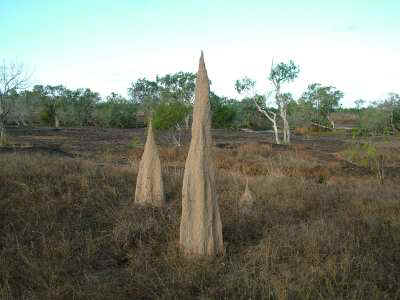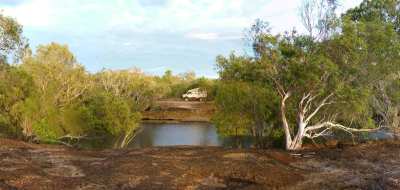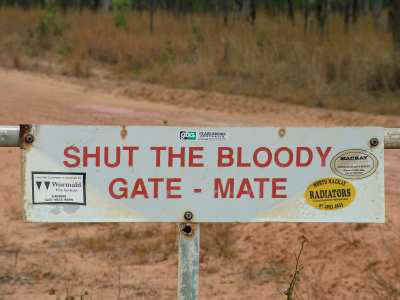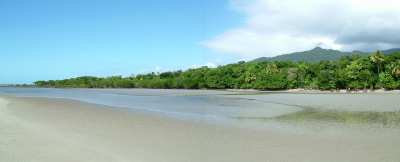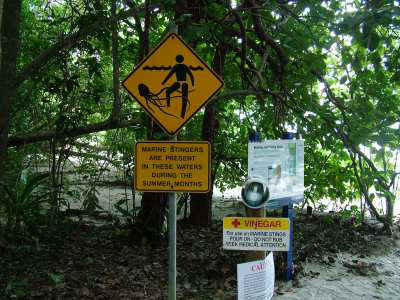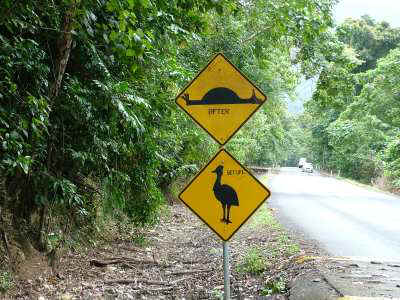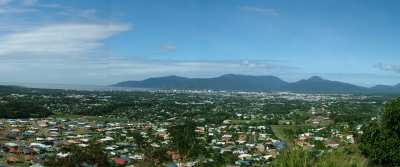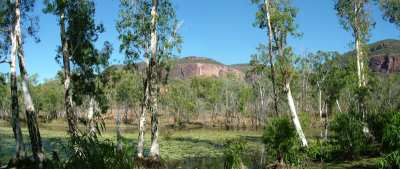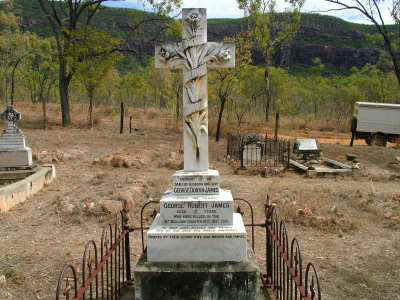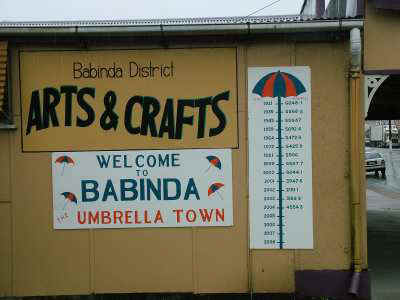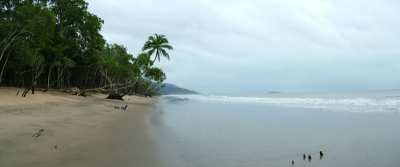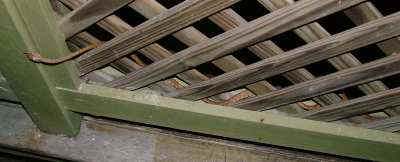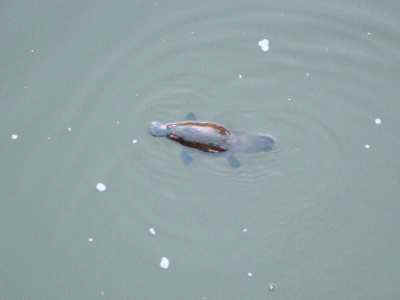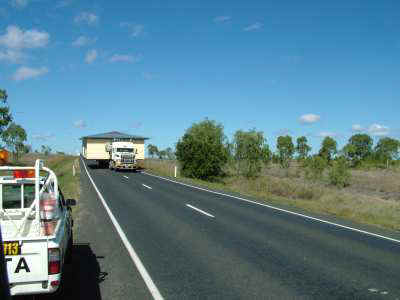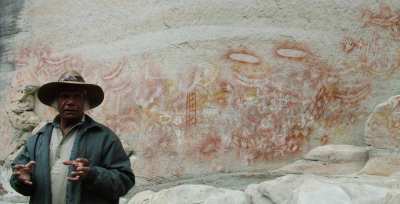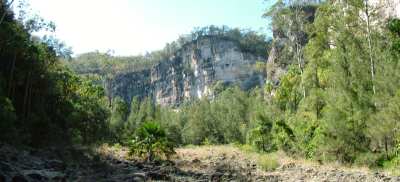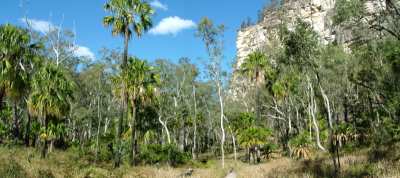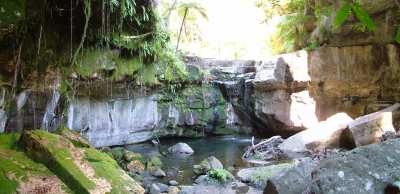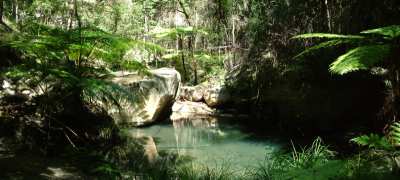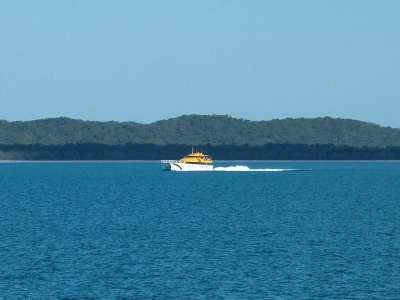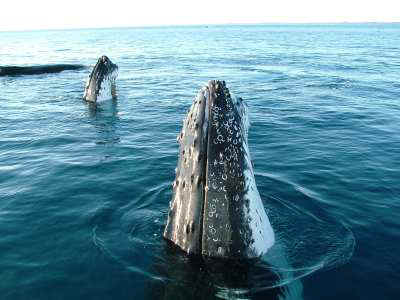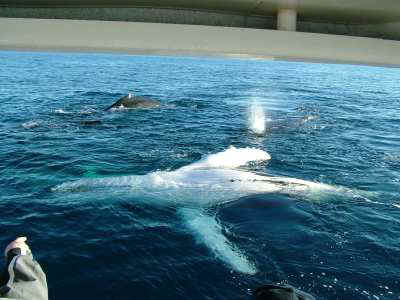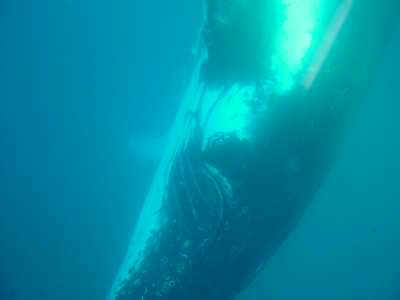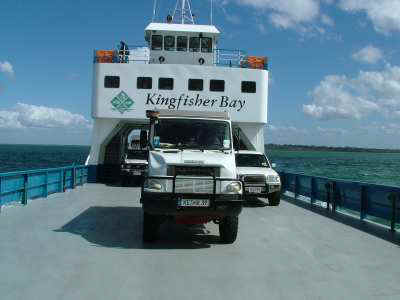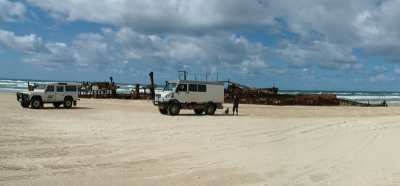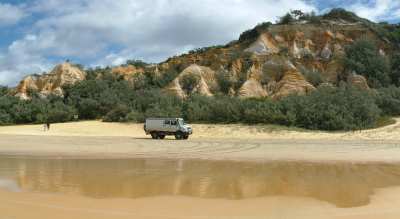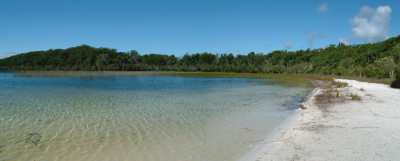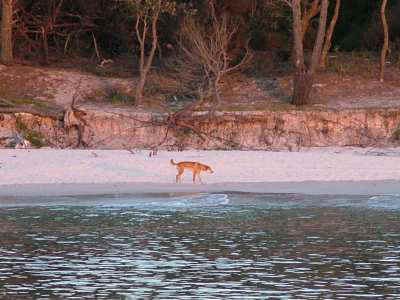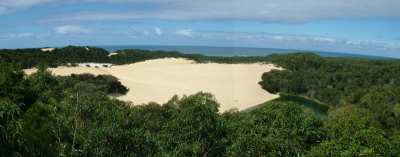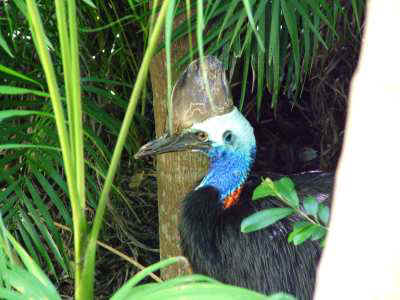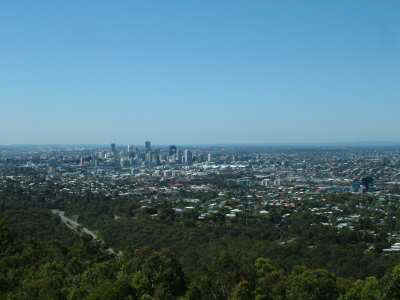| Home |
Wetlands similar to those in Kakadu are characteristic for Lakefield National Park. Luckily you will not meet many tourist coaches.
Apart from the Magnetic Termite Mounds that we already know from Litchfield National Park, you can find these skyscrapers in Lakefield.
Camp at Hann River.
Australian for: Please close the gate. In the outback, you can make farmers very angry if you don't follow the basic rules. Leave gates as you found them. It's not only that they have to search for their cattle. In many cases the animals simply die.
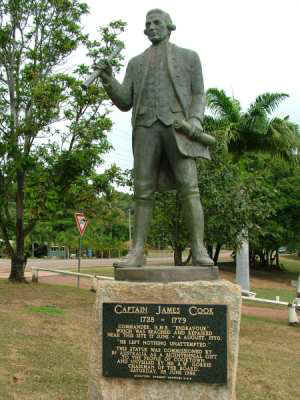 |
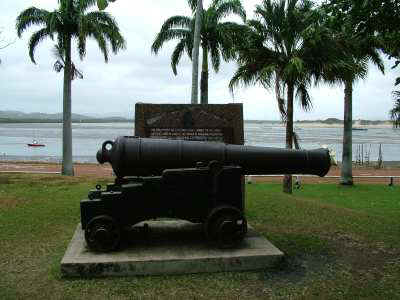 |
James Cook, the great seafarer cast in stone in the town that bears his name. Tribulation he named the Cape, south of here where we ran aground his ship Endeavour. After that he stayed for 48 days in the bight repairing his ship. Die cannon, and three(!) balls have been sent to Cooktown, in 1885 from Brisbane, in fear of a Russian invasion.
Beach at Cape Tribulation.
Northern Australia's beaches are stunning. But in summer you shouldn't go for a swim here. Apart from crocs and sharks there are box jellyfish or marine stingers the deadliest creature on earth. They say the pain is incomparable. Affected skin areas should immediately be doused with vinegar as this inactivates their tentacle nematocysts. There's vinegar provided at some of the popular beaches in the region.
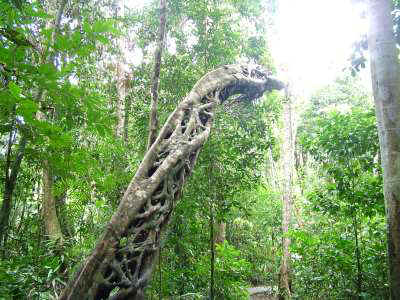 |
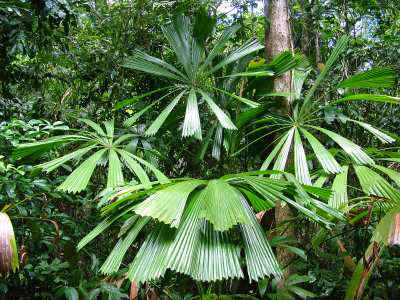 |
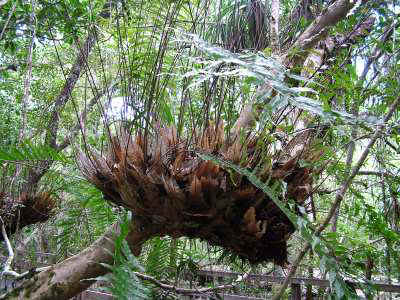 |
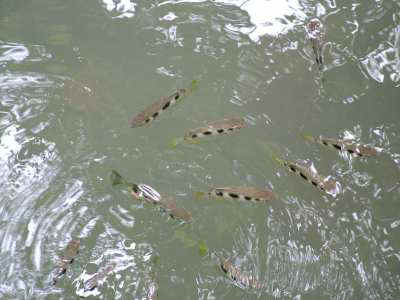 |
Tropical rainforest at Cape Tribulation.
We are desperately seeking the Cassowary, but only find them on road signs.
Cairns. Capital of tropical Far North Queensland.
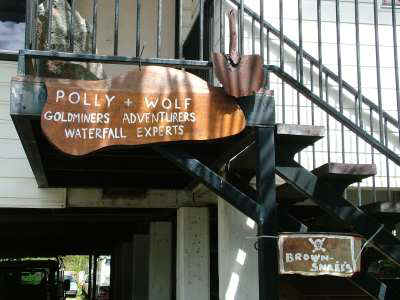 |
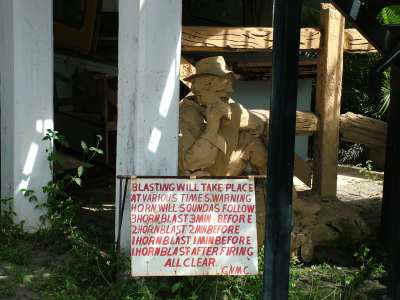 |
Here we are visiting Polly & Wolf. They tell us a lot about the history of the region, its flora and fauna, but mainly we just have a ball for a couple of days.
The weather is unusually lousy in Cairns for this time of the year. To get away from it, we take a small side trip to Mt. Mulligan an abandoned mining town. We stay at a nice bush camp together with a bunch of joke-cracking (good ones :-) locals and two farmers from Victoria and their families.
The sad story of Mt. Mulligan. On September 19, 1921 a horrible coal dust explosion killing at least 75 men in the mine sounded the death nell for the then prosperous mining town. The detonation was heard up to 60km away. Today only the former hospital building is left, used as a farmhouse.
Babinda, truly an umbrella town. Three towns in the region (Tully, Babinda and Innisfail) claim to be the wettest spots in Australia. Since they can't agree how this should be measured, each town advertises its own superlatives. We do not want to meddle with these serious scientific researches, it has been pouring everywhere. Australians love big things, big bananas, big pineapples and so on. Consequently there's a big Gumboot in Tully and you are likely to see a big Umbrella in Babinda soon. The region has been seriously struck by cyclone Larry this year. Fortunately, there have been no serious injuries. The Australians seem to be far better prepared in coping with natural disasters as other leading developed countries.
Bramston Beach south of Babinda.
Our daughter always spots the snakes first. This is probably an Eastern Brown Tree Snake, seen in the Paluma Range National Park close to the loo. There's frogs in the loo, you know. Yum!
It took us a while to get this picture. We've seen them in Tasmania but it was already far to dark there. In Eungella National Park you'll see them in the middle of the day. The Platypus is a monotreme, an egg laying mammal, just like the Echidna. It's found in Eastern Australia from Queensland as far north as the base of Cape York Peninsula down to Tasmania and all over Australia on the 20 cent coin. Some regard it as a proof that God has a sense of humour. We love them, they are great creatures. Just don't get too close, as they have venomous ankle spurs.
If, while driving in Australia, a car comes up to you with flash lights and the sign OVERSIZE, take care. If this first car is followed by a police car then get off the road immediately. It might well be, that a decent sized house is coming down the road at 70 km/h!
In Carnarvon National Park we are fortunate to meet Fred Conway. He explains a lot about the traditional owners of this country and is an excellent ambassador of his culture. He tells us about the history of Carnarvon Gorge as a burial site and holy place for Aboriginal tribes from all directions.
Impressions from Carnarvon Gorge.
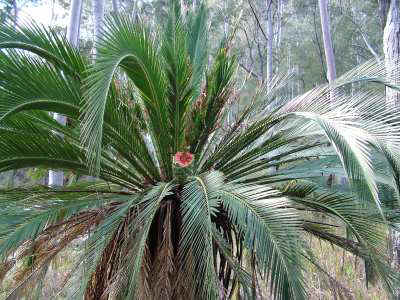 |
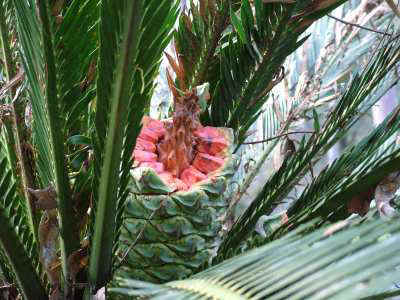 |
The cycads growing here are amazing plants. They roughly grow about 30cm in a century! So this means the ones with 3 meters surrounding us are merely 1000 years old. You can't actually call this "being in a hurry". Besides, as you surely already guessed, their fruit is incredibly poisonous. Fred explained what the Aboribinies did, to find out how to use the fruit as a food source anyway. They used 'volunteers'. Elder people or those who have been ill or too weak to walk volunteered and ate unknown fruit treated in different ways to try if the treatment makes it edible. This may seem very strange for us but in their culture where everything is based on the community and not the individual it is probably just normal.
There are lots of side tracks leading to gorges like the Moss Garden ...
... and the Hellhole Gorge. There's absolutely nothing diabolic about the later, it is actually a very peaceful place.
Back on the coast. One of the many whale watching boats on its way to Platypus Bay. Between July and early November several thousand Humpback Whales are making a regular stop on their annual migration to Antarctica after giving birth in the warm waters of north Queensland.
The search takes quite a while and initially all efforts of our captain to find humpbacks seam to be in vain, but finally he finds them. The tour boats have to stop at a distance of at least 100m from the whales, but they are curious creatures and they come over themselves.
First it's three of them, but later there are five. Almost for an hour they are surrounding the boat, so close you can almost touch them.
Curiously they seam to try to catch a glimpse of what's inside the vessel. Free "human watching" may be a reason why they return on a regular basis.
On the way to Fraser Island, largest sand island on earth.
The famous shipwreck of the the Maheno on Fraser Island. Initially built as a passenger liner it was used as a hospital ship in WWI. On route to Japan where she had been sold to for scrap after she came to grief on Fraser during a cyclone.
The Pinnacles with their colourful sand formations.
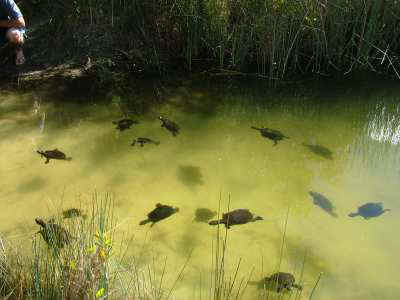 |
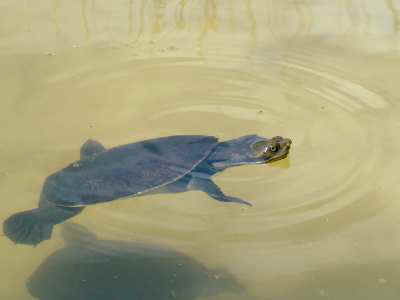 |
Turtles at Lake Athom longing for good tucker. As always we stick to the rule: Do not feed the animals!
Early morning at Lake Garawongera.
Fraser Island is famous for its Dingos
Lake Wabby and its dune. The lake is shrinking by several meters annually.
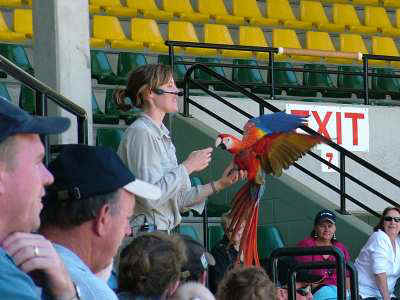 |
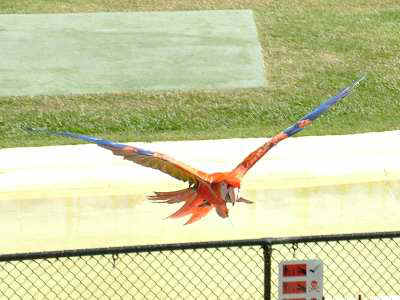 |
At the Australia Zoo in Beerwah.
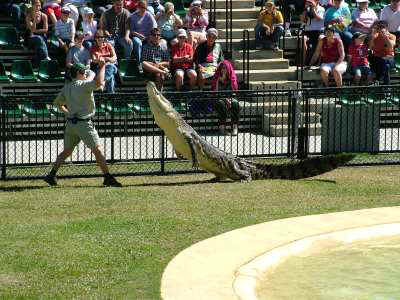 |
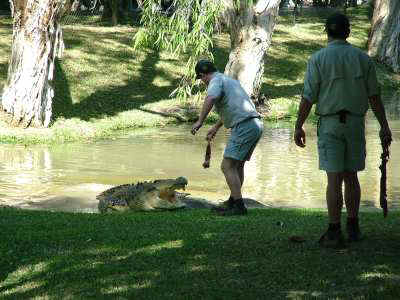 |
Since we had seen many of his TV documentaries, thereby increasing our desire for 'going bush' we definitely wanted to visited Steve Irwin's zoo. Tragically, Steve himself died just recently in a freak accident. As parents of a small child ourselves, our thoughts are with his family.
Finally we meet a Cassowary, if only in a zoo. In the bush it's better to stay away from them, as they are rated worlds most dangerous bird. Their three-toed feet have sharp claws. The middle claw is like a dagger. The Cassowary can use it to kill an enemy, disembowelling it with a single kick. They can run up to 50 km/h and jump up to 1.5 m high.
The skyline of Brisbane.

